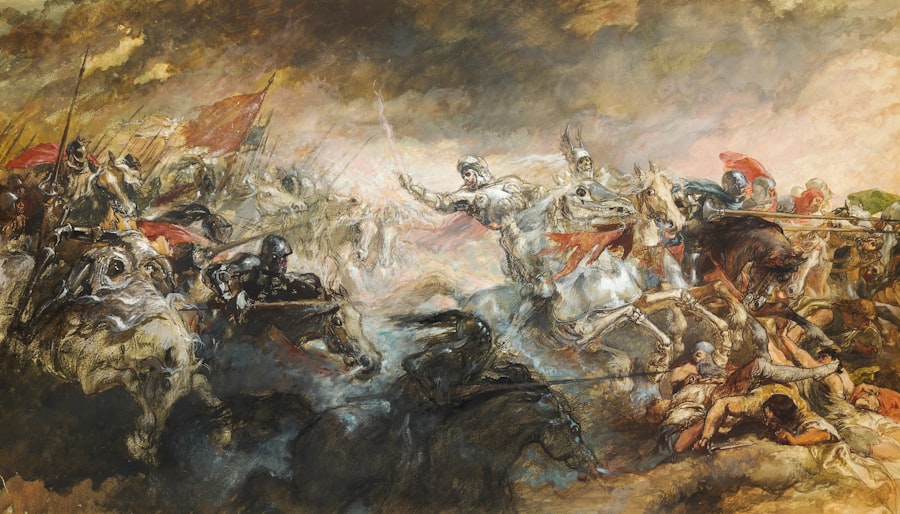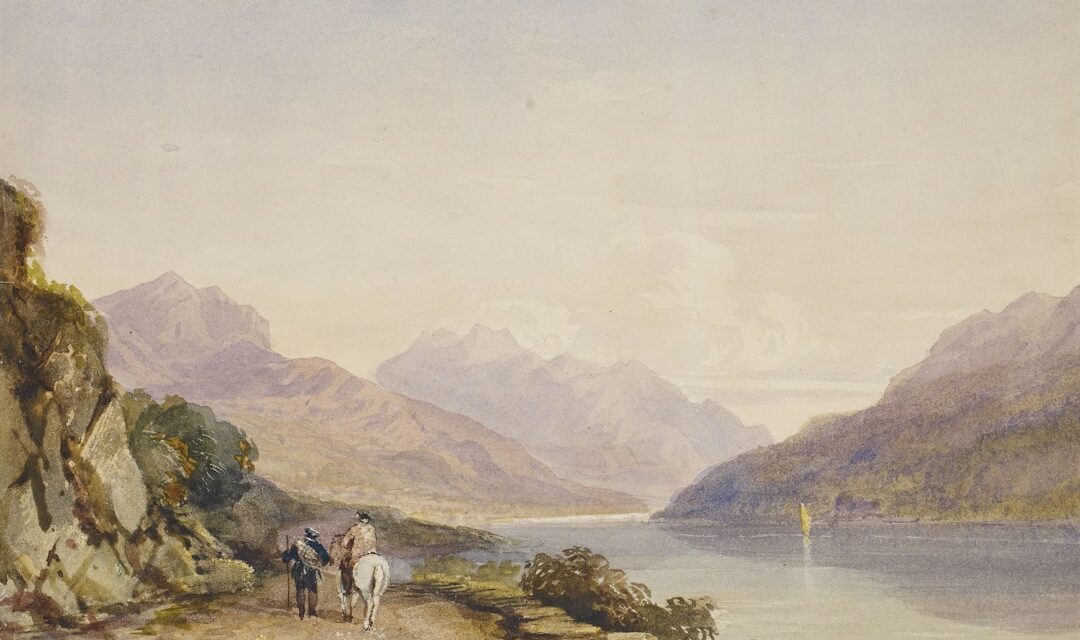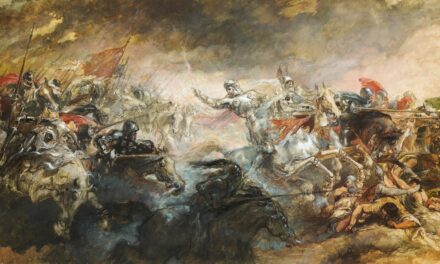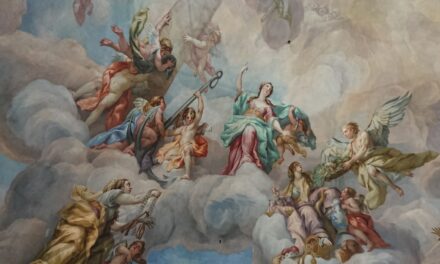Pointillism, a revolutionary painting technique that emerged in the late 19th century, is often associated with the Post-Impressionist movement. Its origins can be traced back to the innovative ideas of Georges Seurat, a French painter who sought to explore the scientific principles of colour and light. Seurat’s fascination with colour theory, particularly the work of chemists and theorists like Michel Eugène Chevreul, led him to experiment with the juxtaposition of small dots of pure colour.
This method was a departure from the traditional techniques of blending pigments on a palette, allowing for a new way to perceive and experience colour on canvas. The term “Pointillism” itself was coined later, in the 1880s, as a somewhat derogatory label for Seurat’s technique. Critics initially viewed it as a mere gimmick, but the method soon gained recognition for its innovative approach to visual perception.
Seurat’s seminal work, “A Sunday Afternoon on the Island of La Grande Jatte,” completed in 1886, exemplifies this technique. The painting features meticulously placed dots of colour that, when viewed from a distance, coalesce into a harmonious image. This pioneering work not only showcased the potential of Pointillism but also marked a significant shift in the trajectory of modern art.
Summary
- Pointillism originated in the 19th century as a reaction against the traditional methods of painting, with artists such as Georges Seurat and Paul Signac leading the movement.
- The principles of Pointillism involve the use of small, distinct dots of pure colour applied in patterns to form an image, creating a sense of vibrancy and luminosity.
- Pointillist artists used tools such as small brushes, stippling brushes, and even the tip of a paintbrush to create their works, and they often worked on canvas or primed panels.
- Key artists of Pointillism include Georges Seurat, Paul Signac, Camille Pissarro, and Maximilien Luce, who each contributed to the development and popularisation of the movement.
- Pointillism had a significant influence on later art movements, such as Fauvism and Divisionism, and its impact can still be seen in contemporary art and design.
The Principles of Pointillism
At its core, Pointillism is grounded in the principles of optical mixing and colour theory. Unlike traditional painting methods that rely on the physical blending of pigments, Pointillism employs the viewer’s eye to blend colours at a distance. This technique is based on the idea that when small dots of pure colour are placed closely together, they can create a more vibrant and luminous effect than if they were mixed on a palette.
The result is an image that appears to shimmer and vibrate, engaging the viewer in a dynamic visual experience. The application of complementary colours is another fundamental principle of Pointillism. By placing colours opposite each other on the colour wheel—such as blue and orange or red and green—artists can enhance the vibrancy of their work.
This technique not only adds depth and dimension but also creates an illusion of movement within the painting. The interplay of light and shadow is also crucial; artists often use lighter dots to suggest highlights and darker dots for shadows, further contributing to the three-dimensional quality of their compositions.
The Tools and Materials Used in Pointillism

Creating a Pointillist painting requires specific tools and materials that facilitate the precise application of colour. Traditionally, artists have used oil paints due to their rich pigmentation and versatility. However, some contemporary Pointillists have also embraced acrylics for their quick-drying properties and ease of use.
The choice of medium can significantly affect the final outcome, as oil paints allow for more subtle blending while acrylics can produce sharper edges. In terms of tools, fine-tipped brushes are essential for achieving the desired precision in dot placement. Artists may also use palette knives or even cotton swabs to create varying sizes and shapes of dots.
The surface on which they paint is equally important; canvas is commonly used, but wood panels or heavy paper can also serve as effective substrates. The texture of the surface can influence how the paint adheres and how the colours interact, making it a critical consideration in the creation process.
The Key Artists of Pointillism
While Georges Seurat is undoubtedly the most prominent figure associated with Pointillism, several other artists contributed significantly to its development and popularity. Paul Signac, a close associate of Seurat, played a pivotal role in expanding the technique beyond its initial confines. Signac’s works often featured vibrant landscapes and seascapes that showcased his mastery of colour theory and his ability to evoke emotion through his use of light and shadow.
His painting “The Port at Saint-Tropez” exemplifies his unique interpretation of Pointillism, characterised by bold colours and dynamic compositions. Another notable artist is Camille Pissarro, who adopted Pointillism later in his career. Pissarro’s works reflect a blend of Impressionist sensibilities with Pointillist techniques, resulting in pieces that capture both the spontaneity of nature and the meticulousness of dot application.
His painting “The Boulevard Montmartre, Spring” demonstrates how he integrated Pointillism into his established style, creating a vibrant urban scene filled with life and movement.
The Influence of Pointillism on Art Movements
Pointillism has had a profound impact on various art movements that followed its inception. The technique’s emphasis on colour theory and optical mixing laid the groundwork for subsequent developments in modern art, particularly in movements such as Fauvism and Abstract Expressionism. Fauvist artists like Henri Matisse were inspired by the bold use of colour seen in Pointillist works, leading them to explore more expressive and emotive applications of colour in their own paintings.
Moreover, Pointillism’s focus on perception influenced later artists who sought to challenge traditional representations of reality. The exploration of light and colour in Seurat’s work can be seen echoed in the works of artists like Vincent van Gogh, who employed similar techniques to convey emotion through colour. The legacy of Pointillism continues to resonate in contemporary art practices, where artists experiment with new technologies and mediums while drawing inspiration from its foundational principles.
How to Create a Pointillist Painting

Creating a Pointillist painting involves several steps that require both patience and precision. First, an artist must select a subject matter that lends itself well to this technique—landscapes, portraits, or still lifes are popular choices. Once a subject is chosen, sketching an outline on the canvas provides a framework for dot placement.
This initial drawing should be light enough not to interfere with the final application of colour. Next comes the selection of colours. Artists often prepare a palette that includes primary colours as well as their complementary counterparts to achieve maximum vibrancy.
The application process begins with layering dots of colour onto the canvas; starting with larger areas before moving to finer details allows for better control over the composition. It is essential to step back frequently during this process to assess how the colours interact from a distance, ensuring that they blend optically rather than physically.
Tips for Mastering Pointillism
Mastering Pointillism requires practice and an understanding of both technique and colour theory. One effective tip is to start small; creating smaller studies can help artists develop their skills without becoming overwhelmed by larger compositions. These studies allow for experimentation with different colour combinations and dot sizes while honing one’s ability to perceive how colours interact at various distances.
Another important aspect is to maintain consistency in dot size and spacing throughout the painting. This uniformity contributes to the overall harmony of the piece and enhances its visual impact. Additionally, artists should not shy away from using unconventional tools; experimenting with different applicators can yield unique textures and effects that enrich the final work.
Finally, patience is paramount; Pointillism is inherently time-consuming, but the rewards are evident in the vibrant results that emerge from meticulous effort.
The Contemporary Relevance of Pointillism
In today’s art world, Pointillism remains relevant as artists continue to explore its principles within contemporary contexts. Many modern creators have adapted the technique to incorporate digital media, using software to simulate pointillist effects or even creating pixel art that echoes the original method’s emphasis on individual units of colour. This intersection between traditional techniques and modern technology highlights how foundational concepts can evolve while retaining their core essence.
Moreover, contemporary artists often draw upon Pointillism as a means to address themes such as perception, identity, and environmental awareness. By employing this meticulous technique, they invite viewers to engage more deeply with their work, encouraging contemplation about how we perceive colour and form in our everyday lives. As such, Pointillism not only endures as a historical movement but also continues to inspire new generations of artists seeking innovative ways to express their visions through colour and light.
For those intrigued by the meticulous art technique of Pointillism, exploring different painting styles can provide a broader understanding of the evolution of art. A recommended read is An Introduction to the Painting “Autumn Rhythm, 1950” by Jackson Pollock. This article delves into the abstract expressionist techniques of Pollock, which, like Pointillism, emphasises the physical act of painting and the use of individual strokes (or splatters) to create a cohesive whole. Understanding Pollock’s approach can offer a fascinating contrast to the precise dot technique used in Pointillism, enriching one’s appreciation of the diverse methods artists employ to capture their artistic vision.




